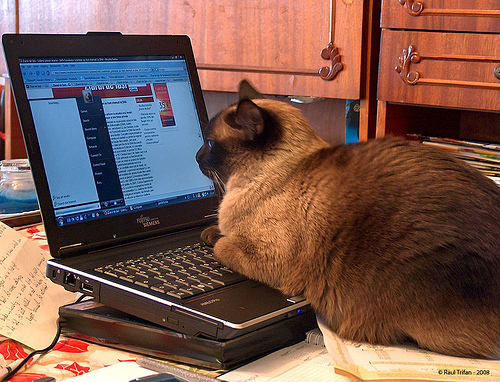
The Newspaper Association of America trumpeted the release of first-quarter online audience data last week with this headline: “Newspaper Web Site Audience Increases More Than Ten Percent In First Quarter To 73.3 Million Visitors,” followed by the glowing subhead: “Newspaper Web Sites Set Records for Audience, Page Views and Active Reach; Latest Scarborough Research: Newspapers Attract Key Demographics in Print and Online.”
Pardon me, then, for reading and questioning the details and putting the data in context, something the NAA doesn’t do.
NAA reports:
- First quarter traffic to newspaper Web sites was reported as 73.3 million unique visitors (average per month) by Nielsen*.
- That’s 43.6 percent of all U. S. internet users, and up 10.5 percent versus the same time last year.
- Page views grew from 3.1 billion per month in last year’s first quarter, to 3.5 billion in 2009.
- NAA CEO John Sturm suggests this points to “digital success.”
Context:
- Each of the top three news destination on the Web (MSNBC, CNN and Yahoo!News) individually each drew more than half the unique visitors of the entire newspaper industry in March. Year-over-year, MSNBC grew 9 percent, CNN 4 percent, and Yahoo!News 16 percent.
- Yahoo!News alone gained 5.2 million uniques in March, or nearly 70 percent of the gain of the entire newspaper industry.
- Newspaper page views at 3.5 billion per month are less than one percent of total U.S. page views (386 billion in February).
- Time spent on newspaper sites in February, 43 minutes, 9 seconds per month per NAA/Nielsen, compares with total time online of 61 hours, 11 minutes and 56 seconds per U.S. person. This means newspaper sites get the attention of the U.S. online audience just 1.2 percent of the time.
- The total U.S. online audience (what Nielsen calls the “active digital media universe”) in February was 167 million individuals. As NAA does note, 43.6 percent of that audience visited a newspaper web site, but given that newspaper site traffic works out to only about 1.6 page views per reader per day, many of the newspaper site uniques are clearly represent one-time-only traffic.
NAA further reports:
Continue reading this post at Nieman Journalism Lab.
Photo by Raoul Trifan, used under Creative Commons license. The soundbite that will circulate in the journoblogosphere for the next 24 hours,
The soundbite that will circulate in the journoblogosphere for the next 24 hours, My proclamation the other day
My proclamation the other day Surprise.
Surprise.
 Not very surprisingly, my former employer,
Not very surprisingly, my former employer,